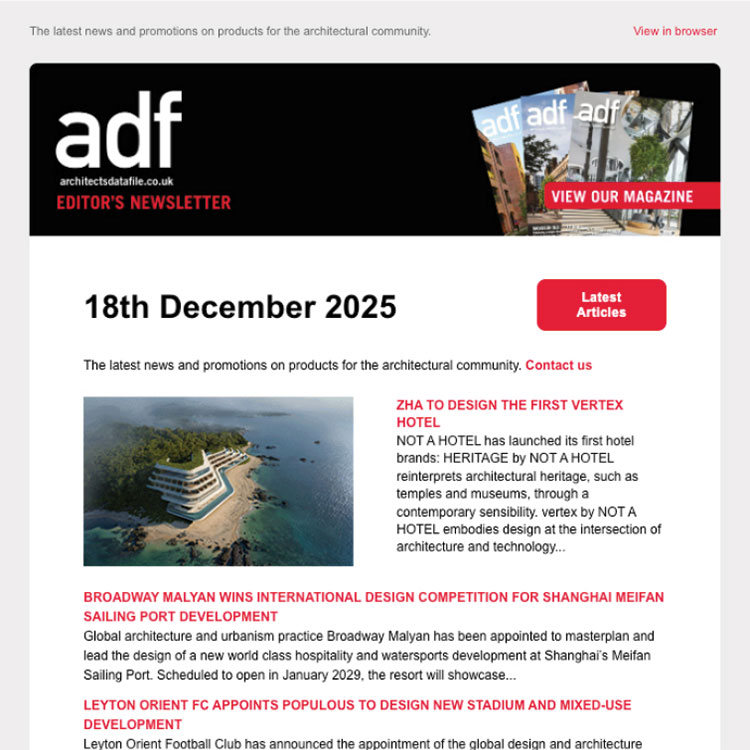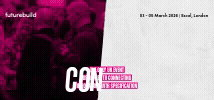Jo Wright, director of architecture for the UKIMEA region at Arup, answers ADF’s questions on her inspirations and challenges
What made you want to become an architect?
I enjoyed studying physics, maths and art and I relished the breadth of skills that architecture requires. With hindsight, I had very little knowledge on which to base the decision – it was mostly instinct!
How did you join Arup?
I spent the first 25 years of my career at FCB Studios. When I was looking for a new challenge I had conversations with a number of practices. I studied at Bath under Ted Happold and Michael Brawne, who had based their multi-disciplinary approach on Arup’s – that’s to say where architects, designers, planners, engineers, consultants and technical specialists collaborate under one roof to deliver “total architecture.” With this background, I had a real sense of coming home when joining Arup.
What is the scope of your role?
My role is to lead architecture in the UKIMEA, which is one of Arup’s five global regions, with studios in 16 locations. We have a longstanding base in London and are currently looking to establish teams across the region, building on Arup’s established locations.
Arup is engaged in some extraordinary projects globally, from a cultural centre in the foothills of the Himalayas, to a new public transport network in a major Middle Eastern city. Closer to home, we have pioneered a new model for integrated social infrastructure in west Wales, bringing together healthcare, education, business incubation and wellbeing.
How has the pandemic affected your work and where are you now based?
I have been working at home – a few miles outside Bath – for the majority of the time since March 2020. I feel incredibly lucky to have a dedicated workspace with a fabulous view of my garden.
In terms of work, we have adapted to an extent I’d never have predicted, and have continued to win and deliver some amazing projects. The pandemic has accelerated our adoption of flexible working and this will remain core to our culture. Every aspect of our work, from design review, bidding to delivery, appraisals and training, can continue remotely. As a global practice, some aspects even work better!
Our team has been amazing in supporting one another and there is a real upside in fostering much stronger connections with the rest of the global team.
What is your proudest professional achievement?
I feel very lucky to have worked on some incredible projects, which have been recognised as innovating in their design, sustainability and user experience. If I had to pick just one, I’d choose the Dyson Centre for Neonatal Care at the Royal United Hospital in Bath. Though just
600 m2, it has transformed outcomes and demonstrated new approaches to the design of sustainable healthcare facilities. This was achieved by extensive engagement with staff and parents whose babies had been treated in the past – their input was fundamental to the success of the project.
What’s your biggest current design challenge?
There are too many to count – but the common thread that runs through every area of our work is to question if a building is always the answer. As much as we love the challenge of a blank sheet of paper, we recognise the imperative to be frugal with finite resources, to embrace the principles of the circular economy, and to reuse in preference to demolition.
Can true sustainability be successfully ‘mainstreamed’ in the next few years?
There is no other option! A more robust recognition of the real cost of whole life CO2 – via taxation or some other means – will be needed to convince the remaining sceptics, or those who regard aesthetics as trumping outcomes. The ‘cost’ of this arrogance is socialised, as we’ve seen with recent floods in Germany and wildfires in Australia and the US. We need to start passing the burden onto those who still aren’t trying hard enough.
Do you think architects will become more central to designing for building performance in future?
Architects are trained to integrate, and the challenges we now face require integrated solutions. It’s about doing more with less, where structure and envelope are the primary environmental moderator. We need to understand and value the input of all parts of the team in order to orchestrate whole life solutions, as described in Ove Arup’s Key Speech more than 40 years ago!
What characteristics do the best clients share?
The best clients I have been lucky enough to work with have recognised that what we deliver is intrinsically linked to what they put in. This is not so much in terms of budget, but in committing adequate time to support the process and in making decisions at the right moment.
A timely “thank you” from clients also goes a very long way. Our teams work incredibly hard to deliver and are spurred on to do so all over again when they feel appreciated!
Is architecture sometimes more about being a good diplomat than being a great designer?
Diplomacy and the ability to effectively communicate with a wide range of participants is an essential part of the architect’s role. This ranges from aligning teams, to managing client and stakeholder expectations, negotiating with officers and members, and inspiring contractors to deliver the outcome we have defined.
There are, however, too many projects that can only come to fruition through architects with over-developed strengths in diplomacy – and a commensurate lack of design skills! These schemes make one despair at the missed opportunity to do something better and the long-lasting implications of poor quality in the built environment.
At 1 Triton Square in London’s West End, we have just completed the extension and renewal of an Arup building from the 90s. We’ve managed to double the net area and secure BREEAM Outstanding against a target of Excellent, with no additional cost! Our clients were persuaded to try something new, with the first circular economy facade in London.
Do you think architects can successfully spend most of their work time at home long-term?
I remain astounded at how well we have adapted. Our team put their technical and creative powers to great use in figuring out the challenges of working from home “on the hoof.” Covid has catalysed changes that might have taken a decade to achieve.
Arup Architecture’s forte is large and complex projects, which require a whole orchestra of specialists to deliver. Historically, our teams have learned not only by exposure to architects, but by being central to an integrated approach. This is much harder to replicate in a virtual environment, and most of us are craving some time back in the office.
But no one will be required to return full time – it remains an option of course, but the obligation under our recently launched ‘Work Unbound’ scheme is to spend a minimum of two days a week in the office. This will liberate people to make their own choices about where and when to work to best support projects and teams while continuing to deliver excellent results for our clients. g
Jo Wright is director of architecture, UKIMEA, at Arup


